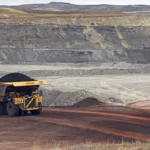Gender Wage Gap Persists in the Equality State, New Research Reveals
Women in Wyoming earn 75 cents for every dollar men make
- Published In: Other News & Features
- Last Updated: Mar 01, 2023

The map above shows how much women earn for every dollar paid to men in counties throughout Wyoming, according to “The Wage Gap in Wyoming in 2022: How Gender, Race and Ethnicity Affect Pay Equity” report. (Courtesy graphic from “The Wage Gap in Wyoming in 2022: How Gender, Race and Ethnicity Affect Pay Equity”)
By Shen Wu Tan
Special to the Wyoming Truth
Although dubbed the Equality State, Wyoming doesn’t always offer equal pay for men and women, findings from a new report reveal.
Women earned 75 cents for every dollar men made in the state, according to “The Wage Gap in Wyoming in 2022: How Gender, Race and Ethnicity Affect Pay Equity” study released in February. The report, by University of Wyoming economists Anne Alexander and Chian Jones Ritten, calculated an average $22.79 hourly wage for men compared to an average $17.04 hourly wage for women.
“Wyoming has historically had one of the largest wage gaps in the country, so finding that our state has a gap that is larger than the national average, although concerning, was not surprising,” Ritten, an associate professor in agricultural and applied economics, told the Wyoming Truth. “A report on the status of working women in Wyoming has been done every few years….”
Ritten said the objective of these reports is to educate Wyomingites—specifically policy makers and business owners—about the gender wage gap and show its vast impact.
Ritten and Alexander estimate the wage gap leads to a loss of $1.5 billion to the Wyoming economy over a year. They also estimate the average working woman in the state loses money from the wage gap during a year that is worth 108 more weeks of food, 12 more months of mortgage and utilities payments, 21 more months of rent or 8,402 gallons of gas.
To measure the gender wage gap, the researchers used microdata from the five-year American Community Survey and calculated the average hourly wage based on a person’s yearly income, weeks worked over 12 months and typical hours worked in a week.
Ritten and Alexander pinpointed the largest gender wage disparity in Lincoln County, concluding that women made 53 cents for every dollar men made. Niobrara County had the lowest wage disparity with women earning 81 cents for every dollar men earned.
The study’s findings align with what Ritten experienced early in her career. For three years, Ritten’s male colleague, who reportedly had less professional experience, earned a salary that was 10% higher than hers, she said. After she learned about this and her supervisor brought it to the attention of upper management, Ritten received a pay increase to match her co-worker’s salary.

“. . . I still missed out on many thousands of dollars because of numerous years of lower pay,” she said.
Factors behind reported gender wage gap
Nationally, women earned 83 cents for every dollar earned by men, a wage gap of 17%, in 2020, the U.S. Census Bureau found. In 2019, Wyoming had the largest gender wage gap nationally between median earnings for men and women who worked full time over the last 12 months, a map from the bureau illustrates, with an estimated difference of about $21,600. The national earnings wage gap by sex in the United States that year was around $10,000.
“Wyoming’s working families rely on the wages of every household wage-earner to make ends meet every week, especially during tough economic times,” Alexander’s and Ritten’s report states. “Wage equity is therefore not simply a woman’s issue – it is a family issue.”
Multiple factors could explain the salary discrepancies for men and women, including education level, college major and degree, type of occupation, number of hours worked and discrimination.
The study found that Wyoming women achieve higher levels of education than men on average. Still, women reportedly earn less than men at every educational level, which matches national trends. The report also found that men are more likely to earn a degree in a major with higher average pay, while women are more likely to obtain a degree in a major with lower average pay.
For instance, nearly half of the men in Wyoming earned degrees in science and engineering, which has an average pay above $83,000, the study claims. Meanwhile, many women in the state earned education degrees, with an average pay of $63,000 for K-12 teachers.
Wenlin Liu, chief economist for Wyoming’s Economic Analysis Division, said a large portion of the state’s wage gap can be attributed to Wyoming’s economic structure and occupation characteristics.
“The industries with one of the highest wage rates have a lot more male workers, such as mining [including oil and gas extraction], manufacturing,” Liu said. “On the other hand, many of the lower wage industries, such as educational services, health care and social assistance, and accommodation and food services, hire a lot more females.”
He added that a main reason for the gender wage gap is the state’s “unique and undiversified economic structure,” pointing out the high proportion of employees in the mining and utility industries, most of them male, compared to other states.
Potential solutions for wage disparities
Since Wyoming has ranked as a state with one of the widest wage gaps, the Wyoming legislature passed a bill in 2017 mandating an update to a 2003 report on gender disparity in wages and benefits.
In response, the Wyoming Department of Workforce Services released a 2018 report that found a “raw gender wage gap” of $0.28. However, when adjusting for variables such as age, education, experience, industry, hours worked and occupation, the adjusted wage gap narrowed to $0.12.
As noted in the report, the Equal Pay Act was signed into law in 1963 with the intention of protecting against wage discrimination based on sex.
“Some argue the existence of a gender wage gap involves subconscious bias by employers, businesses not being transparent with pay structures, and interview processes that require providing employers with past salary history that reinforce the wage gap,” the Wyoming Department of Workforce Services study states. “Arguments that a wage gap doesn’t exist involve different lifestyle and occupational choices between men and women…”
According to Alexander and Ritten, the reported gender wage gap can be addressed in a variety of ways, including supporting businesses that want to conduct internal pay-equity audits; backing organizations like CLIMB Wyoming that train women for higher-paying jobs and economic independence; spreading awareness about anti-discrimination laws and processes for filing claims; supporting efforts by women and people of color to pursue higher education or vocational training; and increasing access to affordable childcare so women don’t have to work fewer hours or leave the workforce.
“Eliminating the gender wage gap would provide critical income to families living in poverty and to all households where women are the primary or co-breadwinner,” Alexander and Ritten wrote in their study. “Aiming to eliminate the [gender wage gap] would also likely increase retirement security, reduce reliance on public assistance, and improve food security and community health for Wyomingites.”













